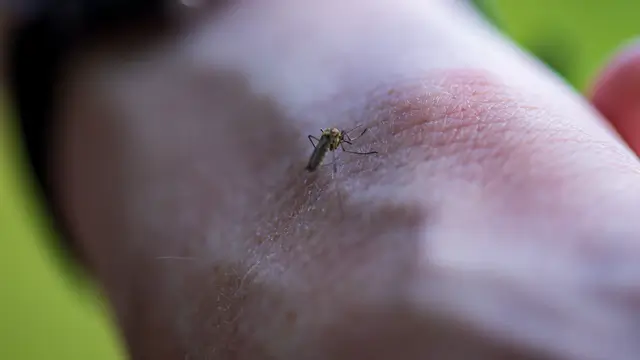Hammock Camping Without a Bug Net
Hammock camping is a great way to enjoy the outdoors and get a good night’s sleep. It’s also a relatively lightweight and easy way to camp, making it a good option for backpackers and backcountry campers.
One of the benefits of hammock camping is that it allows you to sleep suspended above the ground. This can be helpful in areas with uneven ground or where there are insects, snakes, or other animals that you don’t want to encounter.
But, hammock camping without a bug net can be risky, especially in areas with high populations of mosquitoes or other biting insects.
If you’re considering hammock camping without a bug net, it’s important to take the necessary precautions to stay safe and comfortable.
In this article, I’ll provide you with a guide to hammock camping without a bug net. I’ll cover everything from choosing the right hammock and camping gear to setting up your hammock and staying safe and comfortable while you sleep.
Why hammock camp with a bug net?
Using a bug net depends on several factors, such as:
- Where you camp: Some places have more bugs than others, especially at lower altitudes where the vegetation and humidity are higher. If you camp at high altitudes, where there are virtually no bugs, you may not need a bug net at all.
- The time of year: In colder weather, when bugs are less prevalent, you may be able to get away with sleeping in a hammock without a bug net. However, in warmer seasons, when bugs are more active, you may want to use a bug net to protect yourself from bites and diseases.
- How bad the bugs are at that location: Some locations have more bugs than others, depending on the presence of water sources. If you camp near moving or stagnant water, such as rivers, lakes, or ponds, you may encounter more mosquitoes and other insects. If you camp away from water sources, you may encounter fewer bugs.
Additional Reasons
In addition to these factors, there are also some comfort and portability reasons why some people choose to hammock camp without a bug net, such as:
- To enjoy the feeling of sleeping under the stars: Sleeping in a hammock without a bug net can give you a sense of freedom and connection with nature. You can admire the night sky and feel the breeze on your skin, which can be relaxing and refreshing.
- To save weight and space in your backpack: A bug net can add extra weight and bulk to your backpack, which can be inconvenient if you are hiking long distances or have limited space. By leaving the bug net behind, you can reduce your load and make room for other essentials.
- To avoid the feeling of being confined in a tent: Some people may feel claustrophobic or uncomfortable sleeping in a tent, especially if it is small or crowded. A hammock without a bug net can offer more space and flexibility, allowing you to adjust your position and angle as you wish.
- To improve ventilation and airflow on hot nights: A bug net can trap heat and moisture inside your hammock, which can make you sweat and feel uncomfortable on hot nights. A hammock without a bug net can allow more air circulation and cooling, which can help you sleep better.
Read our Tips For Sleeping In A Camping Hammock
Risks of hammock camping without a bug net

Mosquitoes are active during the early evening, and without a bug net, you risk being bitten, leading to discomfort. Also, there are a few health considerations to know:
- Insect bites, especially from mosquitoes, can transmit diseases such as malaria and the West Nile virus. Check this topic for more information about Mosquito-Borne Diseases.
- Ticks can also transmit diseases such as Lyme disease and Rocky Mountain spotted fever. Read more about ticks and Lyme disease.
- Other animals, such as spiders and snakes, may also be attracted to your hammock.
Recommended Reading: Hammock Camping Without Underquilt
How to stay safe and comfortable while hammock camping without a bug net

If you decide to hammock camp without a bug net, there are a few things you can do to stay safe and comfortable:
1. Location Selection
One of the most important factors for hammock camping without a bug net is choosing a good location.
You want to avoid areas with stagnant water, as mosquitoes breed in standing water.
And don’t forget to position your hammock so that the prevailing wind helps keep bugs away. Insects are less likely to fly against the wind.
2. Camp During Cooler Hours
Another tip is to set up camp and relax in your hammock during the cooler hours of the day when insect activity tends to decrease.
Mosquitoes and other biting insects are more active at dawn and dusk, so try to avoid being in your hammock during those times.
3. Inspect the Camping Area
Before setting up your hammock, inspect the camping area for ant mounds, beehives, ticks, or other insect nests, and take the essential precautions by choosing a bug-free location. You don’t want to wake up with bites or stings from unwanted guests.
4. Camp Elevation
Hang your hammock at an elevation where bugs are less likely to bother you. Avoid low-lying areas where insects are more prevalent.
Higher altitudes tend to have fewer bugs, as they prefer warmer and more humid environments.
5. Use Repellents
Apply insect repellent to exposed skin to deter mosquitoes and other bugs. Consider using a repellent with DEET for effective protection.
DEET is the most widely used insect repellent in the world and has been proven to be safe and effective.
You can also consider natural repellents like citronella candles or essential oils like citronella, eucalyptus, or tea tree oil to create a bug-repelling atmosphere.
These natural products can help mask your body odor and make you less attractive to insects.
Consider strategic hanging of a bandanna treated with repellents above your face on the hammock ridge line. This can provide an additional layer of protection.
6. Permethrin Treatment
Treat your hammock and clothing with permethrin about once a month during bug season, an insect repellent that provides lasting protection even after multiple uses.
Permethrin is a synthetic chemical that kills or repels insects by affecting their nervous system. It is safe for humans and animals, but not for aquatic life.
7. Picaridin Use
Apply picaridin as an additional measure to repel bugs. Picaridin is a synthetic compound that mimics the natural repellent found in pepper plants.
It is odorless, non-greasy, and does not damage fabrics or plastics. It is also effective against a wide range of insects, including mosquitoes, ticks, flies, and chiggers.
8. Clothing Choice
Wear long-sleeved shirts and pants to minimize exposed skin. Tuck your pants into your socks to create a barrier against crawling insects.
Choose light-colored clothing, as dark colors tend to attract more insects. You can also wear a hat or a hood to protect your head and neck.
9. Camp Hygiene
Keep your campsite clean and free of food scraps, as these can attract insects. Dispose of trash properly and store food in sealed containers or hang it from a tree.
Avoid eating or drinking in your hammock, as crumbs or spills can lure bugs. Wash your dishes and utensils after each meal and rinse them well.
Read more about: How To Clean A Fabric Hammock
Conclusion
Hammock camping without a bug net? Yes, it is possible. Many campers choose to forgo bug nets depending on factors such as climate, weather, time of year, and personal tolerance for bugs.
But it’s important to be aware of the risks and take the necessary precautions to stay safe and comfortable.
Understand that the effectiveness of the measures in this article may vary, and personal experiences with bugs, especially mosquitoes, can differ based on location and environmental conditions.
However, I strongly advocate for using a bug net during hammock camping, based on its importance for safety and comfort.